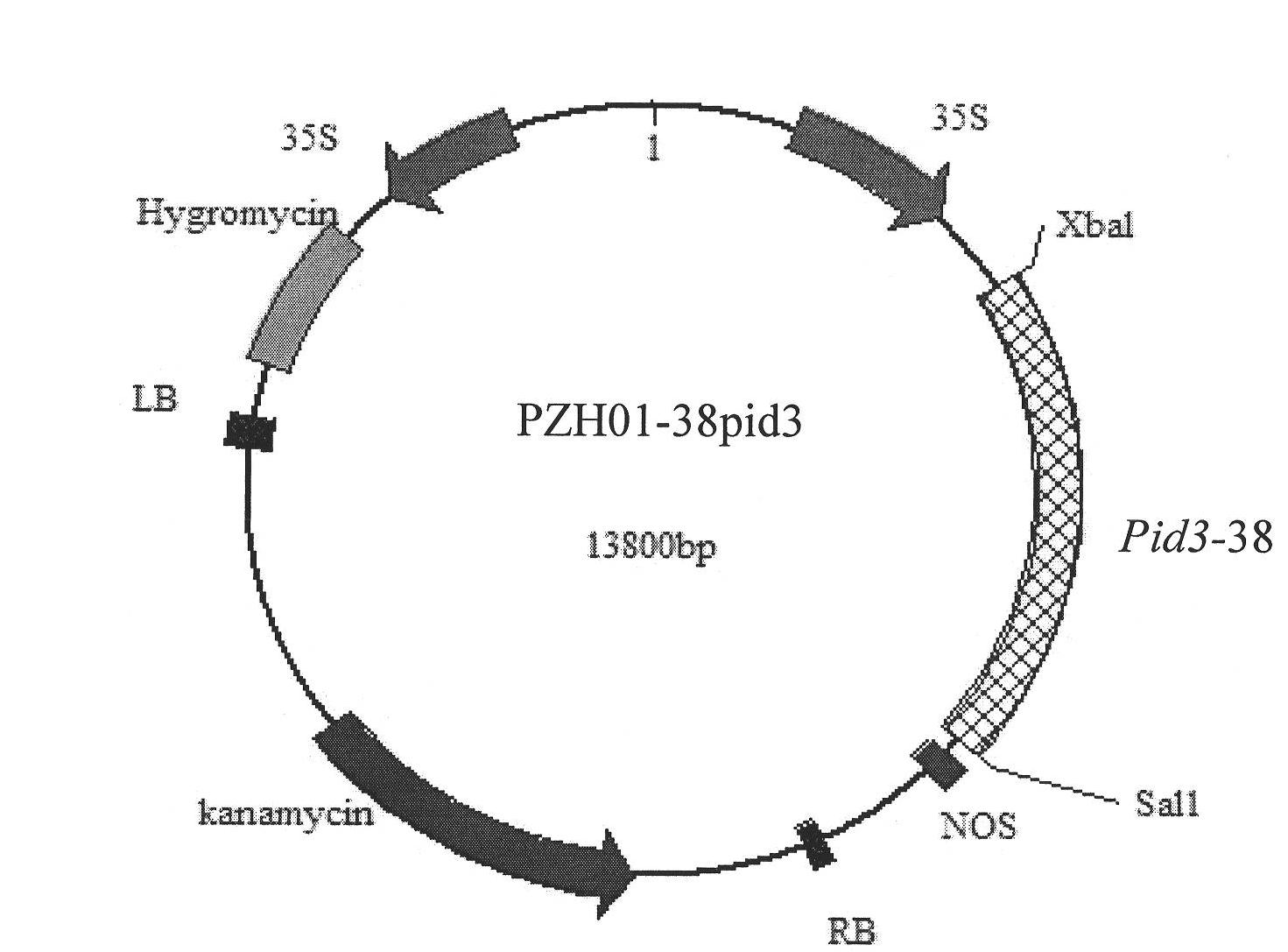Method for cloning piricula oryzae gene of rice
A rice blast resistance gene and rice blast resistance technology, applied in the field of cloning rice blast resistance genes, can solve the problems of narrow genetic background, easy to be affected by the environment, and difficulty in judging clustered genes and disease resistance genes
- Summary
- Abstract
- Description
- Claims
- Application Information
AI Technical Summary
Problems solved by technology
Method used
Image
Examples
Embodiment 1
[0050] Embodiment 1, the acquisition of Pid3-38
[0051] 1. Design primers
[0052] The rice blast resistance gene Pdi3 was cloned from the rice variety Digu. It has good resistance to the rice blast fungus race zhong- 10-8-14. The whole gene sequence of rice blast resistance gene Pid3 in Digu was obtained from NCBI (http: / / www.ncbi.nlm.nih.gov). The full length of Pid3 gene is 2775bp (sequence 5).
[0053] Primers were designed as follows:
[0054] d3F: 5'-atggcggagggtgttgtgggctc-3' and d3R: 5'-ttattgaatcctttctgcagcc-3'.
[0055] In order to facilitate subsequent experiments to connect the amplified gene into the expression vector, Xba1 and Sal1 restriction sites containing protective bases were added to the upstream and downstream primers respectively, so the amplification primers used are:
[0056] Pid3F: 5'-TTTCTAGAatggcggagggtgttgtgggctc-3' (Xba1) (SEQ ID NO: 3);
[0057] Pid3R: 5'-CTGTCGACttattgaatcctttctgcagcc-3' (Sal1) (SEQ ID NO: 4);
[0058] 2. Acquisition of P...
Embodiment 2
[0064] Embodiment 2, rice transfection Pid3-38 and its function research
[0065] 1. Transplanting Pid3-38 rice
[0066] The PCR product obtained in Example 1 was digested with Xba1 and Sal1, and the obtained fragment was digested with the plant binary expression vector PZH01 (Xiao, H., Wang, Y., Liu, D., Wang, W., Li, X., Zhao, X., Xu, J., Zhai, W. and Zhu, L(2003) Functional analysis of the rice AP3 homologue OsMADS16 by RNA interference. Plant Mol. Biol.52, 957-966., The public can obtain it from the Institute of Genetics and Developmental Biology, Chinese Academy of Sciences.) The carrier fragments were ligated, and the ligated product was transformed into Escherichia coli DH5a to obtain a transformant. The transformant was extracted with a plasmid and sent for sequencing. The result was that the plasmid was listed in the sequence list The nucleotides 1-2775 from the 5' end of Sequence 1 are inserted into the vector obtained between the Xba1 and Sal1 restriction sites of ...
PUM
 Login to View More
Login to View More Abstract
Description
Claims
Application Information
 Login to View More
Login to View More - R&D
- Intellectual Property
- Life Sciences
- Materials
- Tech Scout
- Unparalleled Data Quality
- Higher Quality Content
- 60% Fewer Hallucinations
Browse by: Latest US Patents, China's latest patents, Technical Efficacy Thesaurus, Application Domain, Technology Topic, Popular Technical Reports.
© 2025 PatSnap. All rights reserved.Legal|Privacy policy|Modern Slavery Act Transparency Statement|Sitemap|About US| Contact US: help@patsnap.com



